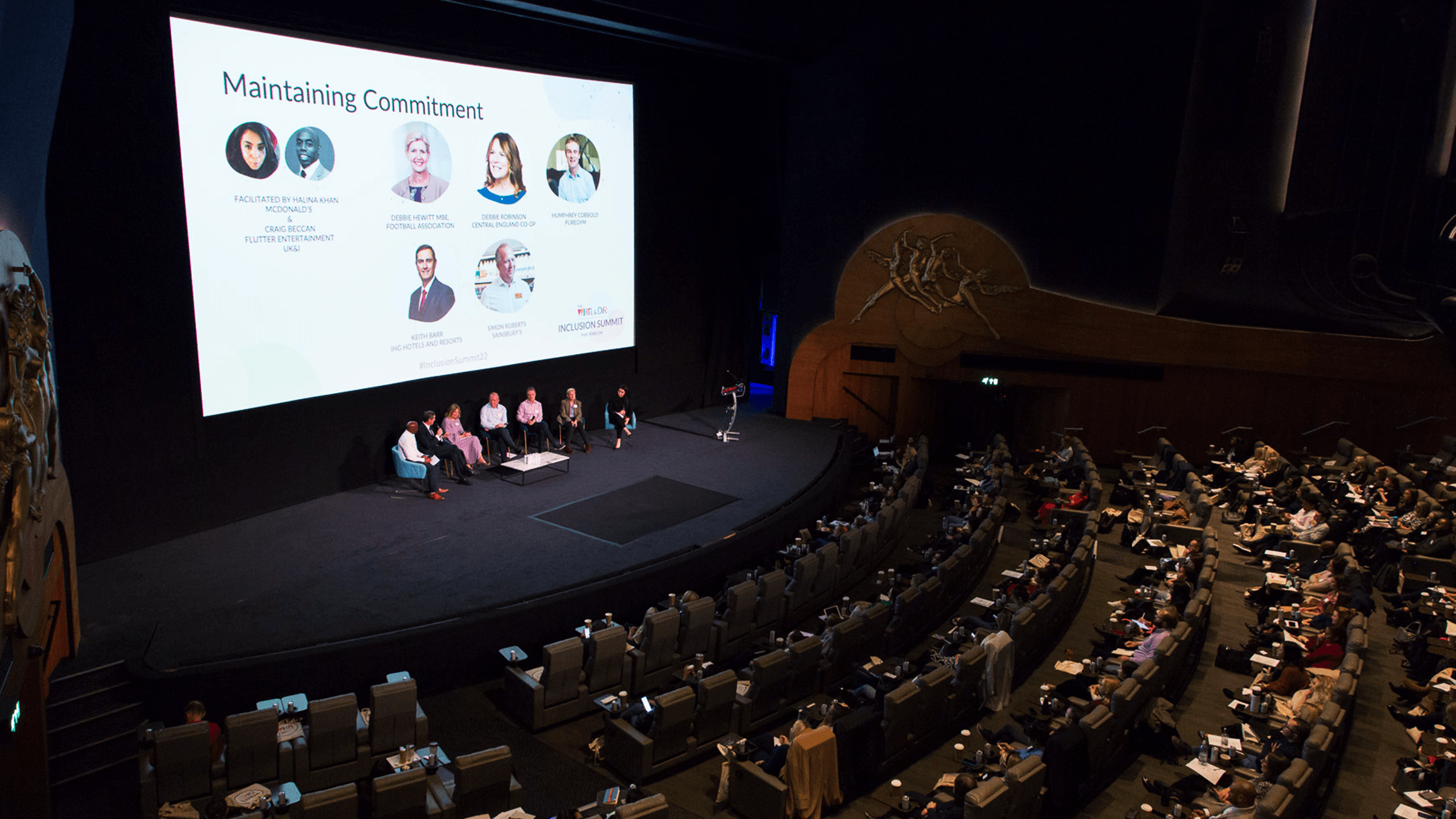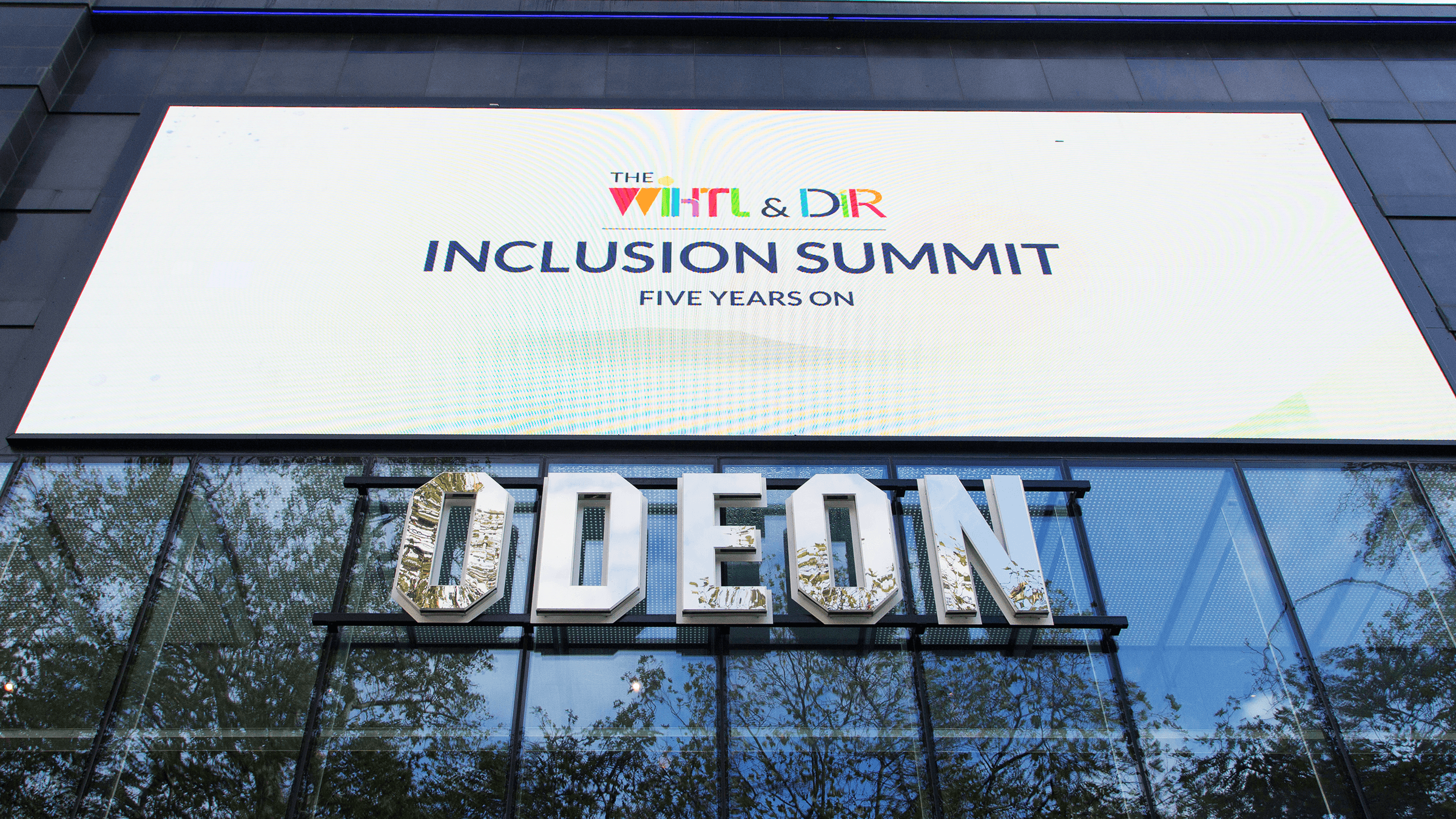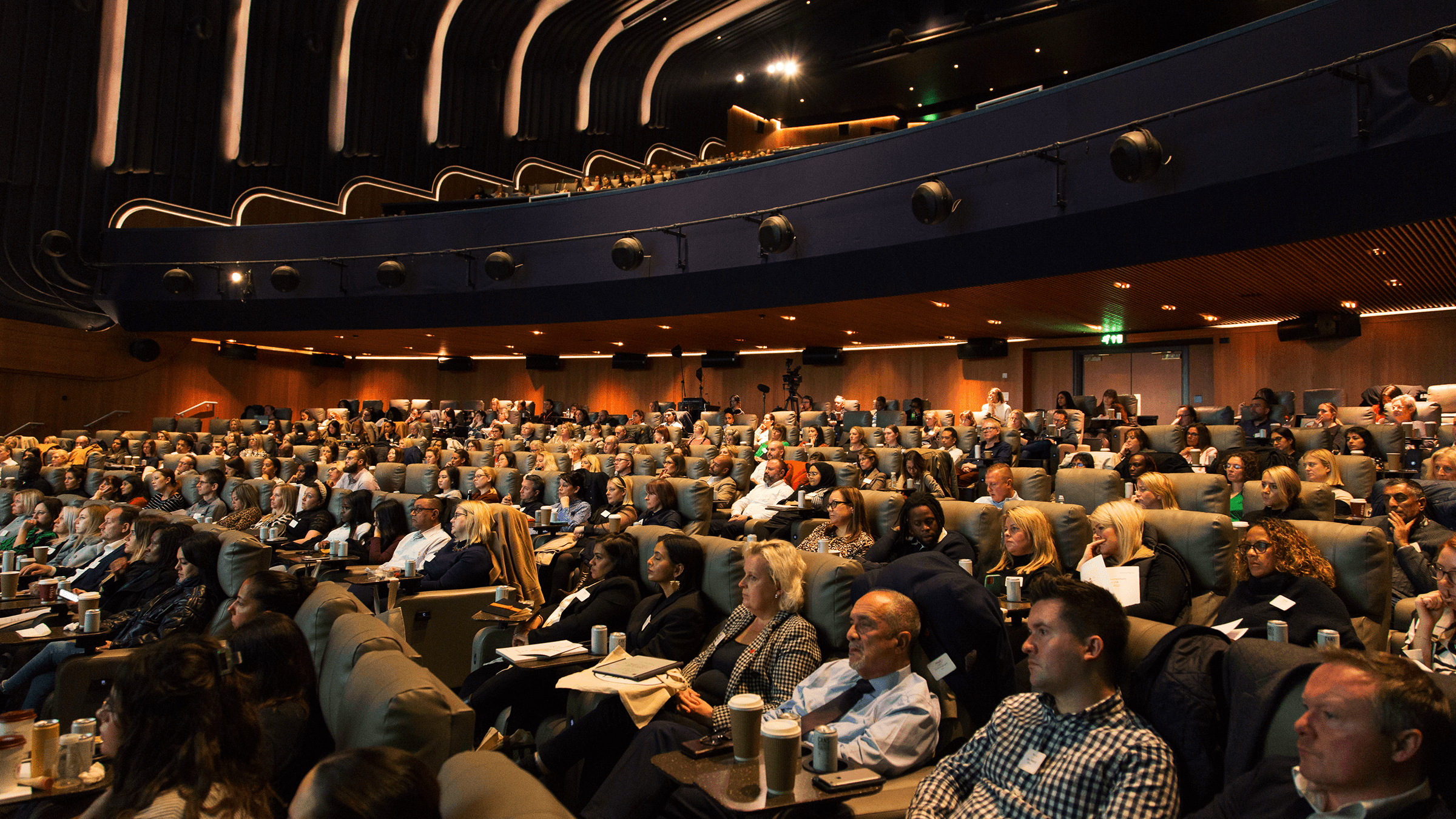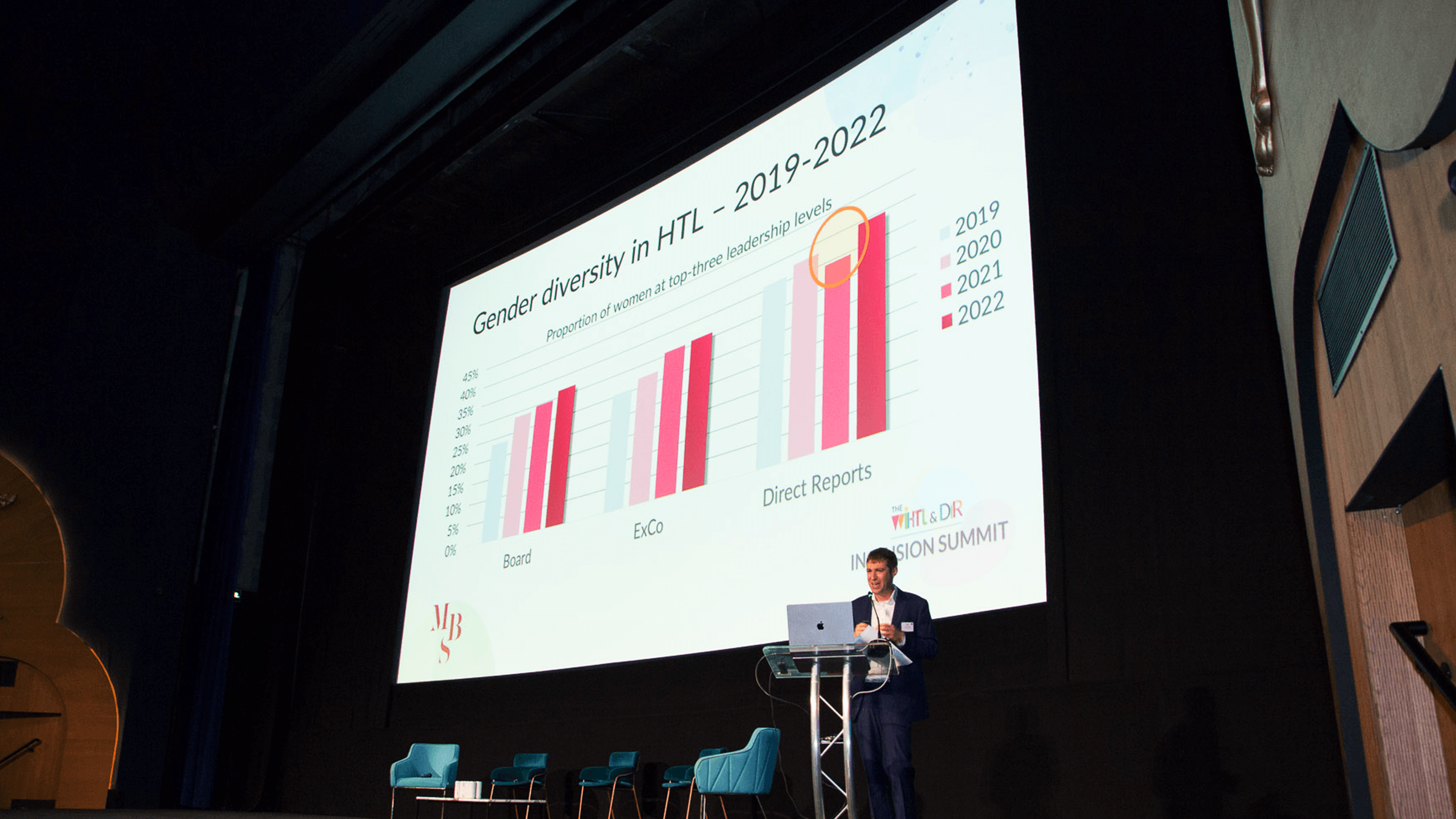It is hard to believe that it has been five years since we first partnered with WiHTL, with the aim of driving diversity and inclusion in the hospitality, travel and leisure sectors. Back then, as we researched our first annual report into D&I, we’d spend hours on the phone with senior executives simply to convince them that D&I was important! But this week, at WiHTL and DiR’s incredible Inclusion Summit, it became clear just how far we’d really come.
Hosted at ODEON’s flagship Leicester Square cinema – “the home of the premiere” – the event brought together more than 700 industry leaders from across HTL and retail, each there to share learnings and reflect on the importance of D&I. Over the course of ten panels and speeches, we heard from Chairs and non-executives, CEOs and chief people officers, and leading industry figures like Mary Portas and John Amaechi OBE.
The event was a real celebration. From the buzzy atmosphere in the foyer to rousing key notes addresses, it was truly exciting to see both sectors come together, and feel the collective appetite to drive meaningful change. As Tea Colaianni, founder and Chair at WiHTL and DiR, said: “each one of us can impact the world – we are making a change and doing this together.”
“Each one of us can impact the world – we are making a change and doing this together.” – Tea Colaianni, founder and Chair at WiHTL and DiR
There is, after all, much to celebrate. As I told the audience in my opening remarks, businesses in HTL and retail are more serious about D&I than they have ever been. Our annual research – which draws on leadership data from more than 200 businesses in HTL, more than 200 businesses in retail, and in-depth conversations with Chairs, CEOs and HRDs – found that 90% of companies in our sectors have a coordinated D&I strategy. What’s more, three-quarters of those strategies are owned “from the top”, by the CEO.
Additionally, D&I initiatives themselves have also broadened. When we first began this research, many businesses had dedicated gender diversity strategies, but only a few focused on ethnicity and LGBTQ+. Today, D&I strategies have extended in most businesses to include disability, social mobility, age, mental health, and menopause.
But change is not happening fast enough. While the proportion of women and ethnic minority leaders is slowly increasing, more than half of HTL companies and a third of retailers still have all-white Boards. In both industries, only around 15% of businesses have any disabled role models. And at the current rate of change in HTL, it will take more than eleven years to reach a 50/50 gender split at the top three leadership levels.
So, what can companies do now? At the Inclusion Summit, one of the points which resonated most strongly was the need to reimagine the future of work. “So many workplace policies are built on an outdated model of society,” said Denise Wilson, chief executive at the FTSE Women Leaders Review, “one which assumes that the leaders at the top are men, and that one parent – usually a woman – stays at home.” Tackling this means lifting the lid on every single people process, scrutinising them to remove bias and discrimination – not only regarding gender, but on all diversity characteristics.
In a panel of CEOs at the event, Keith Barr, CEO at IHG, echoed this sentiment, suggesting that “you have to treat D&I in the same way as you would any other part of business modernisation.” Simon Roberts, chief executive at Sainsbury’s agreed, telling the audience that targets and accountability are at the centre of the grocer’s approach to D&I: “This is a strategic issue, so it’s all about setting goals and measuring the impact. Diversity is now one of the metrics we use to incentivise our senior leaders.”
“This is a strategic issue, so it’s all about setting goals and measuring the impact. Diversity is now one of the metrics we use to incentivise our senior leaders.” – Simon Roberts, CEO at Sainsbury’s
We know from our research that the best strategies are led right from the top, but achieving Board-level engagement comes with its challenges. Debbie Hewitt, former Chair at The Restaurant Group and today the first woman to Chair the FA, reflected that “it’s hard to engage a Board that hasn’t really felt it. I’d suggest that Boards should start by taking the time to think about what D&I means to them, and to the organisation.” Indeed, the panel were clear that fostering the right environment for change is crucial. As one of the CEOs put so aptly: “culture eats strategy for breakfast.”
D&I also needs consistent fresh thinking. “It has to be constantly evolving,” commented Humphrey Cobbold, CEO at PureGym, “we’ll never get to a perfect destination, but constantly find new ways to improve.” One point from this discussion that resonated particularly strongly with me was the need to avoid getting complacent and stale on diversity: if every person around the table can answer every question on D&I, then you need new people, and you need new questions.

Debbie Robinson, CEO at Central Co-op, reflected this point, speaking on the importance of bringing in new voices to the conversation, to balance those at Board and executive level. “After the turbulent years we’ve had, lots of people have battle fatigue,” she said, “we need to make way for younger, brighter, more diverse people. They’re the ones with the ideas to make businesses thrive in the future.” With this in mind, it was particularly inspiring to hear from so many of the next generation of leaders, with many of the graduates from WiHTL’s Ethnic Future Leaders Programme and Global Female Leader Programme moderating the sessions. As one panelist observed: “if you can see it, you can be it.”
I left the Inclusion Summit feeling truly hopeful for the future: momentum on D&I is high, and positive intentions are being translated into tangible actions. Thanks to organisations like WiHTL and DiR, we have a forum to come together, and collectively drive change.
But – especially as we face into a turbulent economic period – it’s equally important to recognise that the job is by no means done, and we have a long way to go. As we move into the next chapter, we must remember that more diverse teams give us the resilience, creativity and balance to weather the storm and to stay close to our customers – particularly in HTL and retail.











